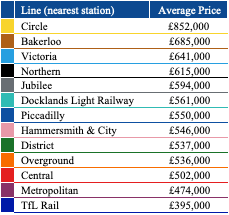Is the Chancellor making landlords scapegoats for the COVID rent debt crisis?
The National Residential Landlords Association (NRLA) states that the Chancellor is making landlords the scapegoats for the COVID rent debt crisis.
A new report published by the NRLA outlines the toll that COVID-19 has taken on the private rented sector. It warns that without financial support to tackle COVID-related rent arrears, the Chancellor is forcing landlords into a corner. They either have to accept continuing to receive no income or resort to repossessing their property with all the consequences this course of action entails for tenants.
The NRLA is warning that the goodwill of landlords in the face of mounting rent debts cannot continue without support from the Treasury.
The report highlights over 800,000 people living in the private rented sector in England and Wales have rent arrears built since lockdown measures began, which are still to be paid off. Of this group, 82% were not in arrears prior to the start of the pandemic.
60% of landlords feel their lettings business will be negatively affected as a result of the pandemic, with 34% saying their rental income has been impacted by the events of the past year. Despite more than 9 in 10 landlords being individuals, and almost half renting out just one or two properties, among those who had offered at least one tenant a rent-free period or allowed rent to be deferred, 58% had absorbed the losses from their savings.
The NRLA says that the Government should introduce new measures to bring housing benefit support back into line with market rents. The private rental sector body highlights Government data from February 2021 shows 55% of private rented households in receipt of Universal Credit across the UK had a gap between that and the rents they paid. This included housing cost support. The average shortfall was £100 a month. Despite this, the Chancellor froze local housing allowance rates in cash terms from April this year, a decision the Institute for Fiscal Studies branded “arbitrary and unfair”.
The NRLA is calling for the Local Housing Allowance to return to covering the bottom 30% of market rents in any given area, and preferably increased so that it covers average rents.
For the majority of tenants now in arrears but ineligible for benefit support, the NRLA is calling for a hardship loan scheme to help tenants pay off rent arrears built since lockdown measures started last March. These should be Government guaranteed, interest free and repayable as the tenants’ incomes recover following the pandemic. The measure has the support of organisations such as the debt charities, StepChange and the Money Advice Trust, and Shelter.
The NRLA believes this could help prevent tenants losing their home and stave off the difficulties caused by damaged credit scores. Of those tenants with COVID-related rent arrears, 26% said that their landlord had attempted to reclaim these through a court order. Such steps serve to damage a tenant’s credit score making it difficult for them to access new housing in the future.
Ben Beadle, Chief Executive of the NRLA, comments: “The Chancellor has clearly decided on a strategy of making landlords the scapegoats for a crisis of his own making. For less than the cost of the ‘Eat Out to Help Out Scheme’ he could provide landlords and tenants with the financial support they need to keep tenants in their homes and prevent damage to credit scores.
“Landlords want to sustain tenancies wherever possible, but without the support so many desperately need, the Chancellor will need to accept the tragic costs of his failure to act.”






